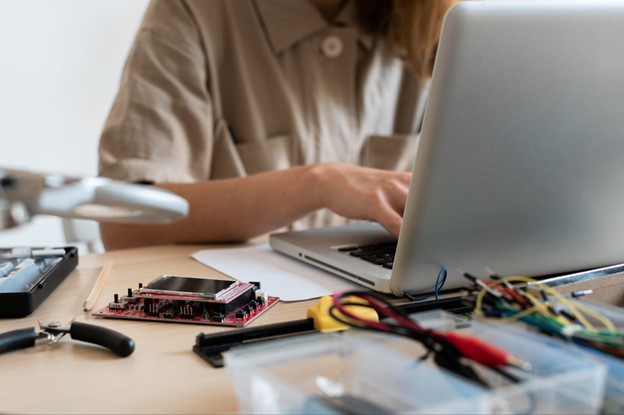Finding the right components for your project ensures efficiency, durability, and optimal performance. Linear actuators play a pivotal role in providing precise and controlled linear motion. Whether you’re working on automation, robotics, or industrial machinery, selecting the proper actuator is essential to achieving your goals.
When you buy linear actuator, it’s essential to consider specific project requirements such as load, speed, environment, and compatibility. A tailored approach ensures that your chosen actuator integrates seamlessly with your system and delivers long-term value. Here’s a detailed guide to help you make an informed decision.
1. Identify the Type of Motion Required
Linear actuators are designed to create straight-line motion, but the specific type of motion varies depending on the mechanism. Understanding your application’s needs helps you choose the correct actuator.
Common motion types:
- Push and pull: Suitable for systems requiring simple, back-and-forth movement.
- Positioning: Ideal for applications needing precise placement.
- Lifting: Supports heavy loads, often used in scissor lifts or medical beds.
Define the motion type your project requires to ensure compatibility with the chosen actuator.
2. Determine Load and Force Requirements
Each actuator has a specified load capacity, indicating the maximum weight it can support. Exceeding this limit can result in mechanical failure or reduced efficiency.
How to determine load:
- Calculate the maximum weight your actuator will handle.
- Factor in dynamic forces, such as acceleration or vibrations.
- Select an actuator with a higher capacity than your calculated load for added safety.
Proper load matching prevents overworking the actuator, extending its lifespan and reliability.
3. Choose the Appropriate Speed and Stroke Length
Speed and stroke length are critical parameters when selecting a linear actuator. The speed determines how quickly the actuator moves, while stroke length defines the range of motion.
Key considerations:
- Speed: Match the actuator’s speed to the timing requirements of your system.
- Stroke length: Ensure the actuator’s motion range accommodates your design specifications.
Balancing speed and stroke length ensures smooth operation without compromising precision or efficiency.
4. Consider the Operating Environment
Environmental conditions can impact the performance and durability of a linear actuator. Choosing an actuator designed for the environment ensures consistent operation over time.
Environmental factors to evaluate:
- Temperature: Ensure the actuator functions within the temperature range of your application.
- Moisture and dust: Look for IP-rated actuators to protect against water or debris.
- Corrosive exposure: Choose materials such as stainless steel for corrosive environments.
Actuators built to handle your specific environment reduce the risk of failure and extend operational life.
5. Decide Between Electric, Hydraulic, or Pneumatic Actuators
Linear actuators are available in different configurations, each suited to particular applications. Understanding the strengths and weaknesses of each linear actuator type helps you select the most appropriate option.
Actuator types:
- Electric actuators: Known for precision, energy efficiency, and low maintenance.
- Hydraulic actuators: Ideal for high-force applications but may require frequent maintenance.
- Pneumatic actuators: Lightweight and fast but less precise than electric options.
Evaluate the pros and cons of each type based on your project’s specific needs.
6. Evaluate Control Options
Many actuators include integrated control systems or support external controllers for precise operation. Choosing the correct control option ensures compatibility with your existing system.
Control features to look for:
- Feedback mechanisms: Encoders or sensors for position tracking.
- Programmable options: Allows custom settings for speed, force, or timing.
- Integration: Compatibility with PLCs, IoT systems, or manual controls.
Advanced control options enhance flexibility and make actuators easier to integrate into sophisticated systems.
7. Check Power Requirements
Different actuators require specific power sources, such as AC, DC, or fluid pressure. Ensuring compatibility with your power setup is vital for seamless operation.
Considerations for power compatibility:
- Electric actuators: Match voltage and current to your system.
- Hydraulic or pneumatic actuators: Verify the availability of pressure systems.
- Energy consumption: Opt for actuators with efficient power use to reduce operating costs.
Choosing the correct power configuration avoids complications during installation and operation.
8. Review Manufacturer and Product Specifications
Understanding the manufacturer’s reputation and product quality can make a significant difference. A reliable manufacturer ensures consistent performance and provides valuable support.
Tips for evaluating manufacturers:
- Look for certifications like ISO for quality assurance.
- Read reviews or case studies from similar industries.
- Request product datasheets and technical documentation.
Collaborating with a trusted supplier ensures you receive high-quality components tailored to your project.
9. Test Before Finalizing Your Purchase
Testing helps verify that the actuator meets your project’s specifications. Many manufacturers provide samples or demo units for evaluation.
Testing checklist:
- Verify smooth and consistent motion.
- Check alignment with system components.
- Ensure the actuator meets load, speed, and precision requirements.
Testing minimizes risks and guarantees optimal performance in your final system.
Choose the Perfect Actuator for Your Project
When buying a linear actuator, focus on key parameters such as load, speed, environmental conditions, and compatibility to ensure the best fit for your requirements. Understanding your application’s unique needs and evaluating options thoroughly leads to reliable and efficient results.
Take the First Step Today
Begin your search for the perfect linear actuator by listing your project requirements and exploring reputable manufacturers. Don’t compromise on quality—invest in the proper actuator to ensure your project’s success and longevity.








